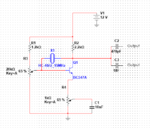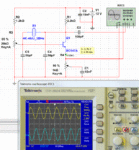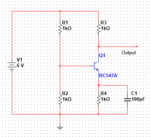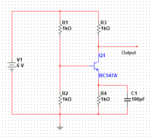patrickian01
Member level 1
Hi,
So I've been trying to build an oscillator using crystal resonators and I'm familiar with the crystal equivalent circuit being a series RLC in parallel with a capacitor and I've been told that the values of the components in the equivalent circuit is found on it's datasheet. The problem is, I couldn't find the datasheet for my crystals and I don't even know it's manufacturer. The crystals are labeled as follows:
39.168 UNI 97 - A (this is a 3rd overtone crystal, i tried using it on an IC oscillator and it works on the 3rd overtone)
72.673 UNI 7A (3rd overtone crystal)
46.475 UNI (3rd overtone crystal)
63.3333 UNI 7A (3rd overtone)
It worked on an IC oscillator using 74LS04 and produced square waves. I'm trying to do it with transistors so i get a sine wave, however, first things first, i need the datasheet for the crystals. Any help is much appreciated.
So I've been trying to build an oscillator using crystal resonators and I'm familiar with the crystal equivalent circuit being a series RLC in parallel with a capacitor and I've been told that the values of the components in the equivalent circuit is found on it's datasheet. The problem is, I couldn't find the datasheet for my crystals and I don't even know it's manufacturer. The crystals are labeled as follows:
39.168 UNI 97 - A (this is a 3rd overtone crystal, i tried using it on an IC oscillator and it works on the 3rd overtone)
72.673 UNI 7A (3rd overtone crystal)
46.475 UNI (3rd overtone crystal)
63.3333 UNI 7A (3rd overtone)
It worked on an IC oscillator using 74LS04 and produced square waves. I'm trying to do it with transistors so i get a sine wave, however, first things first, i need the datasheet for the crystals. Any help is much appreciated.








